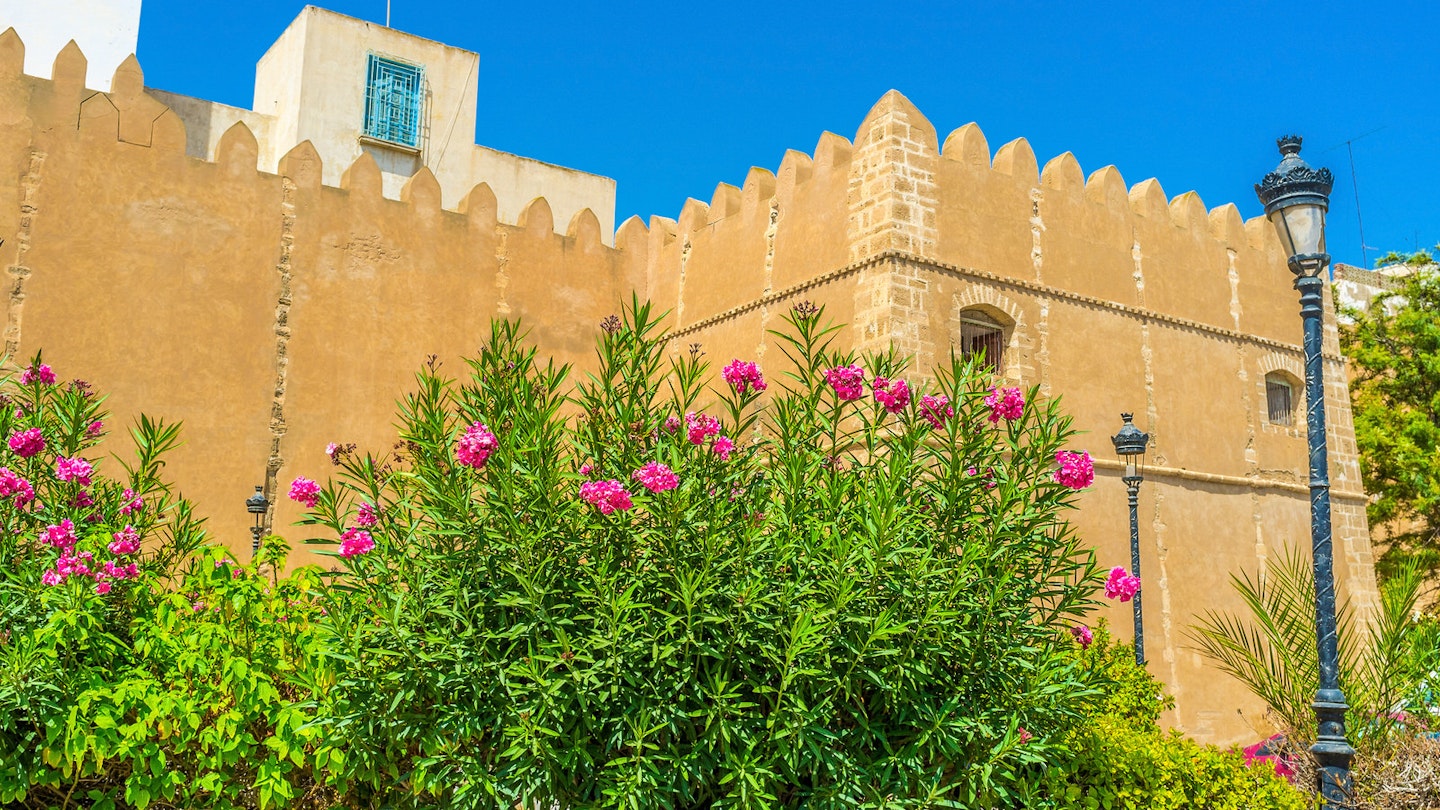With few touristy sites, industrial Sfax usually falls off travelers’ radars. However, its 1200-year-old medina – the smallest in Tunisia – boasts plenty of history and heritage architecture to entice art lovers. Furthermore, the vibrant markets and eateries tempt any foodie, showcasing local color and authentic atmosphere.

Until recently, the ancient walled part of Sfax, known as the medina, was a place where locals only shopped during the day without lingering after nightfall. Yet, in recent years, this area has been undergoing a vibrant revival. Since Tunisia’s 2011 revolution, locals have united, creating organizations aimed at inspiring change and rejuvenating urban spaces, particularly the historic medina.
Today, the Sfax medina stands as one of the city’s best areas to not only shop but also enjoy authentic home-cooked meals or people-watch in lively cafes. Amid its millennia-old walls lie fabulous examples of traditional architecture, along with workshops where artisans can be seen practicing their crafts. Here’s how to find the soul of Sfax within the meanderings of the medina.
Pause to Enjoy the Medina’s Buzz at a Rooftop Cafe
The medina has become a trendy hangout thanks to laid-back cafes enriched with cheerful, rustic decor. In stark contrast to traditional men-only cafes, these venues create a welcoming atmosphere for women. The rooftop of Dar Baya, Sfax’s only heritage hotel, has been transformed into an open-air cafe featuring cozy seating areas adorned with wood and wicker furniture. This space also doubles as a cultural venue, hosting storytelling events and concerts by local artists. Visit in the morning for a quiet cup of coffee as the souqs awaken, or arrive at sunset to witness the sun dip below the medina’s rooftops.
Café Kemour is another popular gathering place, where friends chat over strong mint tea at low tables. Inside, stone walls and archways illuminate with colorful glass lanterns, while the outside open-air terraces provide stunning views of the medina.

Sample Tunisian Specialties at Local Eateries
Lunchtime in the medina is alive with local workers enjoying home-cooked meals. Head to Dar Bellaaj, a family-run restaurant featuring welcoming wall tiles and simple bamboo furniture. Without a menu, offerings change daily based on seasonal vegetables. Don’t miss trying shakshuka or couscous, staples of Tunisian cuisine prepared in various ways. There are ample vegetarian and vegan options available, while meat lovers will delight in a plethora of grilled fish and seafood dishes.
Located in a courtyard adorned with marble floors and vibrant tilework is Adar Lekbira, a heritage house turned atmospheric restaurant. Here, traditional Tunisian dishes take center stage, and in winter, relish a locally loved breakfast of cereals mixed with pomegranate, crispy beignets, freshly baked bread drizzled with olive oil, and rich chamya.
For seafood aficionados, Restaurant Chouaib Le Pêcheur is a must-visit. Decorated with traditional furniture and colorful tiles, this popular eatery is renowned for serving some of the best seafood in the medina.

Explore a Heritage House and Step Back in Time
One of the medina’s oldest and most beautiful traditional houses, Dar Jellouli, has been meticulously preserved and is open to the public as a museum. Built in the 17th century, this house now houses the Regional Museum of Popular Arts and Traditions. Stepping inside transports visitors back in time. Its traditional layout and architectural details remain preserved, opening onto a large central courtyard adorned with colorful Andalusian wall tiles.
Each T-shaped room captures aspects of everyday life, such as cooking, dressing, and hosting guests, complemented by informative panels and artifacts. The upper floor showcases traditional costumes, while the top holds exhibitions of oil paintings and Islamic calligraphy.

Discover the Secrets of the Medina
Local photographer Houcem Boudaya of Hello Tunisia aims to educate Sfaxians and visitors about the medina’s history. When not guiding tours through historical sites, he documents everyday life in the medina through his photography and video project Beb Jebli. His guided walks lead visitors through the souqs, uncovering historical gems along the way. A must-visit stop is the Abdennadher Bakery, where traditional lafif bread is prepared in wood-fired ovens. Witness artisans in action as they craft handmade shoes, traditional robes, and beautiful decorative items.

Practice Your Haggling Skills in the Colorful Souqs
Enclosed within the medina are over two dozen lively souqs or markets. Unlike those in other cities, where stalls typically sell tourist trinkets, these markets offer locals the day’s vegetables, repaired shoes, and bespoke wedding attire. Each souq specializes in different wares.
Dating back to the 9th century, Souq Erbaa is the oldest and one of the largest. Explore its cobbled lanes, a hub for textiles, particularly traditional garments. Souq Dhahab, known as the gold market, primarily offers silver or wooden items today. In Souq Kamour, fragrant incense and medicinal plants fill the air. Souq Khayata is a treasure trove for sewing, while Souq Kriaa offers practical household goods amidst stunning brick arches.
The Funduq El Haddadine is a landmark within the medina, now transformed into a vibrant exhibition and market space for handicrafts. Formerly a resting place for traveling traders, it now hosts workshops showcasing handmade clothing, traditional sweets, and decorative items crafted by women entrepreneurs.





